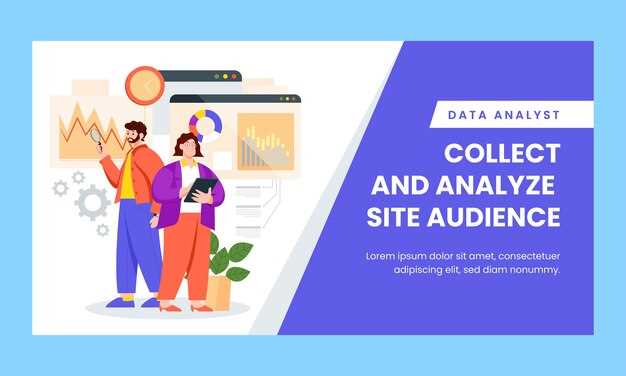

The modern landscape of data analysis is characterized by the ongoing evolution of technologies and methodologies that enhance performance across various domains. Among these methodologies, real-time data analysis and post-session review analysis stand out as two distinct types that cater to different needs and contexts. Understanding the nuances between these approaches is crucial for optimizing decision-making processes and improving overall outcomes.
Real-time data offers the advantage of immediate insights, allowing organizations to react swiftly to changes and demands as they occur. This type of data encompasses live monitoring systems that capture and process information instantaneously, providing a dynamic understanding of performance metrics. The agility that comes with real-time data is invaluable in scenarios where timing is critical, enabling businesses to pivot strategies based on up-to-the-minute information.
In contrast, post-session review analysis involves a more reflective approach, where data is collected and examined after a specific event or period has concluded. This method allows for comprehensive evaluation and deeper insights into performance trends, fostering a strategic analysis of actions taken and their outcomes. By reviewing historical data, organizations can identify patterns, assess effectiveness, and implement improvements for future endeavors.
Both types of data analysis have their merits and specific applications, and the choice between them depends on the goals and context of the analysis. As we delve deeper into the comparison of real-time data and post-session review analysis, we’ll explore how each approach impacts performance and decision-making in today’s fast-paced environment.
Understanding the Impact of Real-Time Feedback on Performance Improvement

Real-time feedback plays a crucial role in enhancing performance, particularly in dynamic environments where quick adjustments are necessary. The immediate nature of this feedback allows individuals to understand their strengths and weaknesses as they operate, providing a continuous stream of data that informs decision-making. By receiving timely insights, performers can make instant corrections, leading to more effective execution of tasks.
One of the significant advantages of real-time feedback is its ability to foster a culture of continuous improvement. When individuals receive immediate information about their performance, they are more inclined to engage in reflective practices, allowing them to analyze their actions and adapt swiftly. This ongoing cycle of evaluation and adjustment not only enhances individual performance but also contributes to overall team effectiveness.
Moreover, real-time feedback utilizes various data sources, such as performance metrics, peer evaluations, or automated tracking systems. This multifaceted approach ensures that the feedback is comprehensive and relevant. As data is gathered continuously, it provides a richer context for the performer, enabling them to understand the effects of their actions in real-time rather than relying solely on retrospective analysis.
Additionally, real-time feedback can significantly improve motivation and engagement. When individuals see the direct impact of their efforts through immediate feedback, they are more likely to stay focused and committed to their goals. This heightened engagement can lead to increased productivity and a more positive work environment, as individuals feel supported and guided in their performance journey.
In conclusion, the implementation of real-time feedback mechanisms offers a powerful method for performance improvement. By leveraging immediate data insights, individuals can refine their skills, drive better outcomes, and cultivate a proactive approach to personal and team development. The strategic use of real-time feedback ultimately transforms the way performance is perceived and managed, leading to sustained growth and success.
Comparing Data Types: Quantitative vs Qualitative in Performance Analysis
In performance analysis, data can be categorized into two primary types: quantitative and qualitative. Each type offers unique insights and serves distinct purposes in evaluating performance effectively.
Quantitative data refers to numerical information that can be measured and analyzed statistically. This data type is essential for providing objective metrics related to performance. For instance, sports analytics may utilize metrics such as points scored, time taken, or distance covered. By quantifying performance, analysts can identify patterns, calculate averages, and track improvements over time. This type of data is particularly valuable for comparative analyses, as it allows for direct comparisons between different performances or among various athletes.
Conversely, qualitative data encompasses non-numerical information that captures subjective experiences, insights, and opinions. This includes feedback, observations, and personal reflections on performance situations. In sports, qualitative data may involve athlete interviews, coach assessments, or video analysis of techniques. This type of data enriches the understanding of performance by providing context and deeper insight into the motivations behind an athlete’s actions. Furthermore, it can highlight areas that are not easily quantifiable, such as mental resilience or team dynamics.
Both data types are crucial for a comprehensive performance analysis. Quantitative data offers precision and clarity, enabling stakeholders to make data-driven decisions. Meanwhile, qualitative data complements this by adding depth, helping to interpret the numbers and inform strategies. By integrating both quantitative and qualitative data, analysts can achieve a holistic view of performance, leading to more effective training and improved outcomes.
Integrating Post-Session Insights for Continuous Development

In the realm of software development and performance improvement, integrating post-session insights is critical for fostering continuous development. This integration allows teams to utilize valuable feedback effectively, ensuring that growth is both systematic and sustainable.
Post-session reviews serve as a powerful tool for gathering data on various aspects of a project, including user interactions, system performance, and overall project outcomes. These insights can be categorized into different types, such as qualitative user feedback, quantitative usage metrics, and performance analytics. Each type provides a unique perspective that, when combined, forms a comprehensive view of project health and areas for improvement.
To maximize the benefits of post-session insights, organizations must establish structured processes that facilitate the collection and analysis of data. Implementing regular review sessions after key project milestones helps teams reflect on past actions and outcomes. This reflects a proactive approach, where teams not only review performance metrics but also actively seek feedback to guide future development cycles.
Moreover, feedback loops between development teams and stakeholders ensure that insights are not only documented but also actionable. This dynamic exchange fosters a culture of continuous improvement, where teams can adapt to changes in user needs and emerging market trends. By prioritizing the integration of post-session insights, organizations can drive innovation and enhance product quality over time.
In conclusion, the integration of post-session insights is essential for continuous development. By leveraging various types of data and establishing effective feedback mechanisms, teams can ensure that their development processes remain agile, informed, and responsive to both user needs and technological advancements.







